How to Care for House Plants
Steps for Indoor Plant Care to Reduce Houseplant Stress
I should have been more aware of the houseplants I brought in for the winter. I wasn't So imagine my dismay when I finally looked at the few houseplants I have, and recognized the signs of improper care. |
| Spider Mite Webs |
 |
| Yellowing Leaves of Pothos |
I had the plant hanging from a hook in a west facing window for its winter home. So I was pretty sure the light was not the problem. Pothos can tolerate low light even from a north facing window. I had watered this guy in the days previous, so I didn't think it was suffering from thirst. Pothos can go for long periods of dryness. Watering every 3 – 4 weeks will not harm it.
In fact so many houseplants suffer and die from the over-watering by well-meaning caretakers. Wet feet – water standing in the container – can cause molds, and harbor diseases. If the soil is soggy water fills the soil pores and pushes out oxygen the roots need. The soil should have a chance to drain, and dry out between watering. A moisture meter
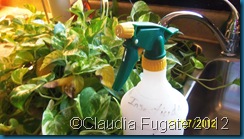 |
| Gold Pothos |
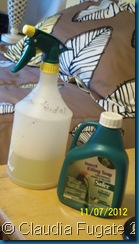 |
| Safer Insecticidal Soap |
 |
| Water Spray to Wash Plant Leaves |
The Safer Insecticidal Soap
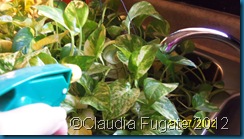 |
| Insecticidal Soap Spray for Spider mites |
The next step in my attempts to save this sickly plant, was to check a resource I frequently refer to – Jerry Baker
A note in Jerry Baker
 |
| Water Softener Valve |
So I've devised a method to treat my houseplants better, and reduce their stress.
 |
| Charcoal Filter |
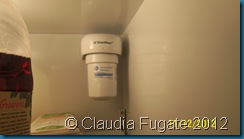 |
| Water Filter in Refrigerator |
The yellow leaves were still a concern. I had the right lighting, and the water source was room temperature and filtered. So I continues to research Jerry Baker's
This pothos was outside all summer. And besides the rain or rain barrel watering, this guy was on his own. Duh – months of growing with no food. Months of flushing nutrients through the potting mix with no nutrition. I am so embarrassed!
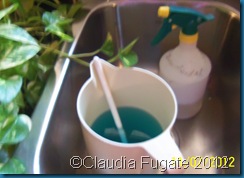 |
| Liquid fertilizer mixture |
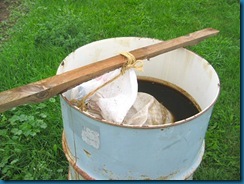 |
| Compost tea |
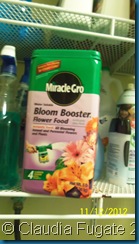 |
| Water Soluble Fertilizer |
 |
| Brown Spot on Leaf |
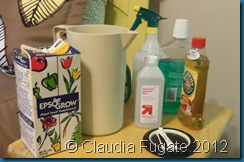 |
| Epsom Salts for Added Magnesium |
Watering houseplants with a weak solutions made from a used tea bag and a few drops of dish liquid will give nutrients to maintain a healthy plant. The tea is slightly acidic which plants like, and the soap makes the water wetter, so it disperses through the soil and to the roots of the plant.
Jerry Baker
2 tbsp. of whiskey
1 tbsp. of hydrogen peroxide
1 tbsp. of Fish Fertilizer
1/4 tsp. of instant tea granules
1/2 tsp. of unflavored gelatin
1/2 tsp. of liquid dish soap
1/2 tsp. of ammonia
1/2 tsp. of corn syrup
1 gal of warm water.
Mix all of the ingredients, and use this instead of plain water on your houseplants.
The ammonia is a source for Nitrogen, and the corn syrup adds carbohydrates for the plant’s food source.
 |
| Golden Pothos |
Houseplant stress can be reduced by smart watering practices, and adequate light. Room temperatures between 65 degrees and 72 degrees is optimal to reduce houseplant stress.
I love to have plants indoors over the winter. Finding plants that are easy to care for and also aid in indoor air quality will be addressed in the next few posts. Houseplants in the office can also have benefits we will discuss.
Thanks for your visit today. What houseplants do you have? What problems do you encounter in their care? Leave a comment, I’d love to hear from you.

1 comment:
I feel there are variety of factors that can affect a plants growth cycle. Houseplants need proper care in terms of weeds, proper water management, air flow etc...If these things are taken care of then the Houseplants are sure to bloom beautifully.
Visit this link for more information.
http://www.advancednutrients.com/hydroponics/articles/houseplant-care-and-feeding/
Post a Comment